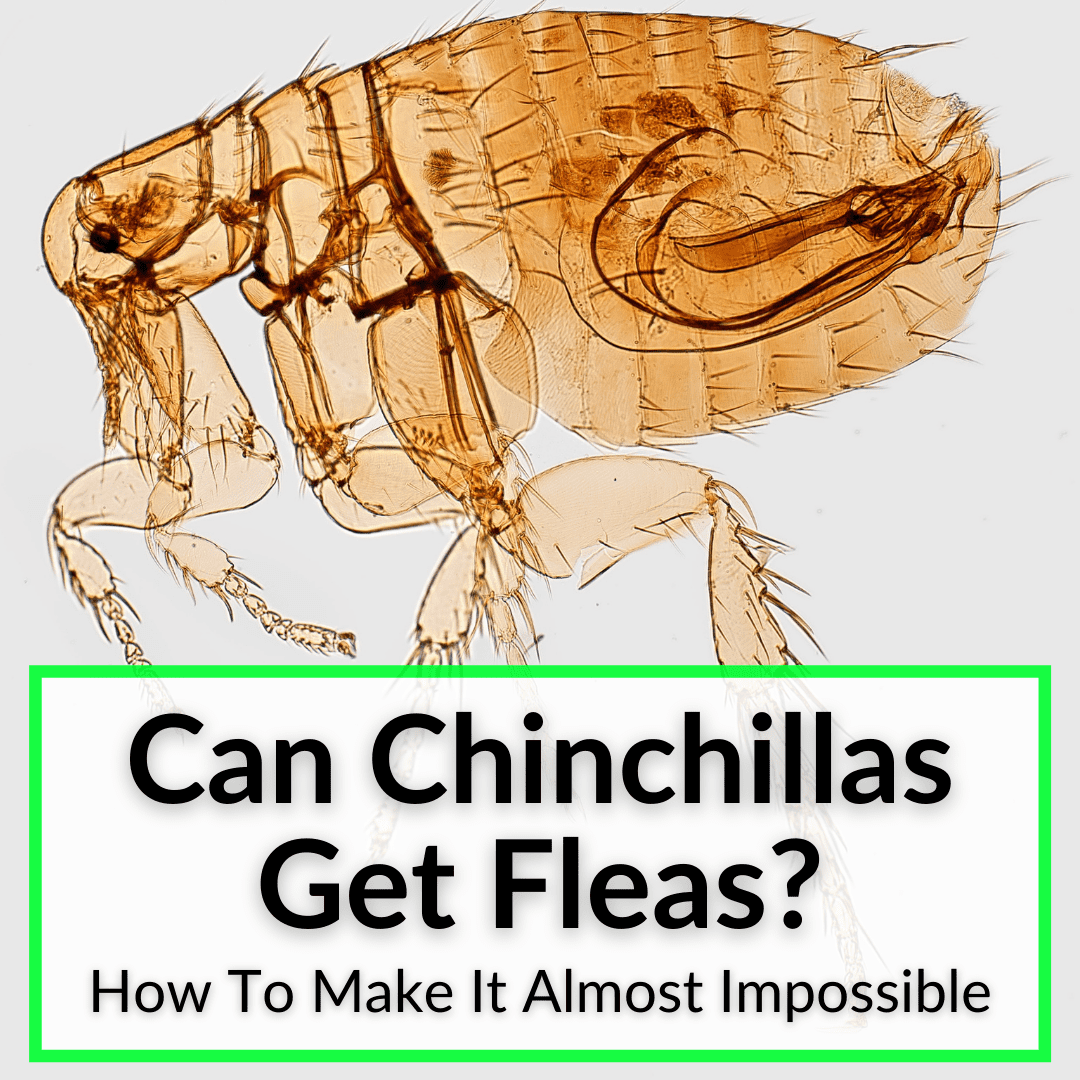
You may have noticed some conflicting information concerning chinchillas and fleas.
Many chinchilla owners believe it is impossible for chinchillas to get fleas, because their fur is so dense.
But that is not entirely true.
While the fur makes it very hard on fleas, it is not entirely impossible that they take hold.
Luckily, you can make it virtually impossible, by simply doing a few things you should be doing anyway.
Keep reading to learn what those are, along with everything else you need to know about chinchillas and fleas.
Contents
Can Chinchillas Get Fleas?
Yes, chinchillas can get fleas, but it is very rare. Their dense fur makes it difficult for fleas to get in and survive.
But it is not impossible. If you do suspect that your chinchilla might be infested with fleas, you should take it to a vet to be sure.
That said, we will cover how you can tell if your chinchilla has fleas below. We’ll also explain what you can do to treat fleas and how to decrease the likelihood of them appearing in the first place.
But before we get into that, let’s take a closer look at the reason it is so rare for chinchillas to suffer from a flea infestation.
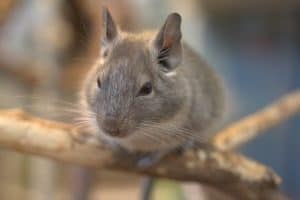
😕Adopting and caring for a new chinchilla can be intimidating and confusing. But it does not have to be.
Be sure to check out my full digital eBook “Avoiding Critical Mistakes: Ultimate Chinchilla Care eBook” for the best advice, tips, and tricks and supply recommendations to make adopting and caring for a chinchilla much more comfortable and easier to understand.
You can learn more about this eBook offer using the link directly below.
Learn more here:👉 Avoiding Critical Mistakes: Ultimate Chinchilla Care eBook Offer
Natural Protection Against Fleas
So now we know that it is, indeed, possible for your chinchilla to get fleas. But it doesn’t happen very often.
As mentioned, the reason for this is the incredibly dense fur with which chinchillas are blessed: that insanely soft fur that we all know and love.
Ironically, while this fur keeps them warm and protects them, it is also the very reason they came close to extinction. As always, poachers just couldn’t resist.
And the furs has one other drawback for our purposes today.
While it makes it exceedingly difficult for fleas to infest your chinchilla, once they do get in, the dense fur also makes it difficult for us to spot the fleas.
Spotting fleas on other pets, like dogs or cat, is a much simpler. That is because you can simply move the fur to the side in order to see down to the skin.
With chinchillas, pulling back fur and getting a good look is much more difficult. For two reasons.
First, the denseness of the fur makes it almost impossible to peel it back enough to get a good look deep enough into the fur to spot any fleas.
Second, although chinchillas are friendly and may enjoy cuddling in many circumstances, that doesn’t mean they are going to want to be held while you peel back fur in search of all those bloodsucking fleas.
They’re going to make it difficult for you. So let’s see how you ca check your chinchilla for fleas effectively.
How To Check For Fleas On Your Chinchilla
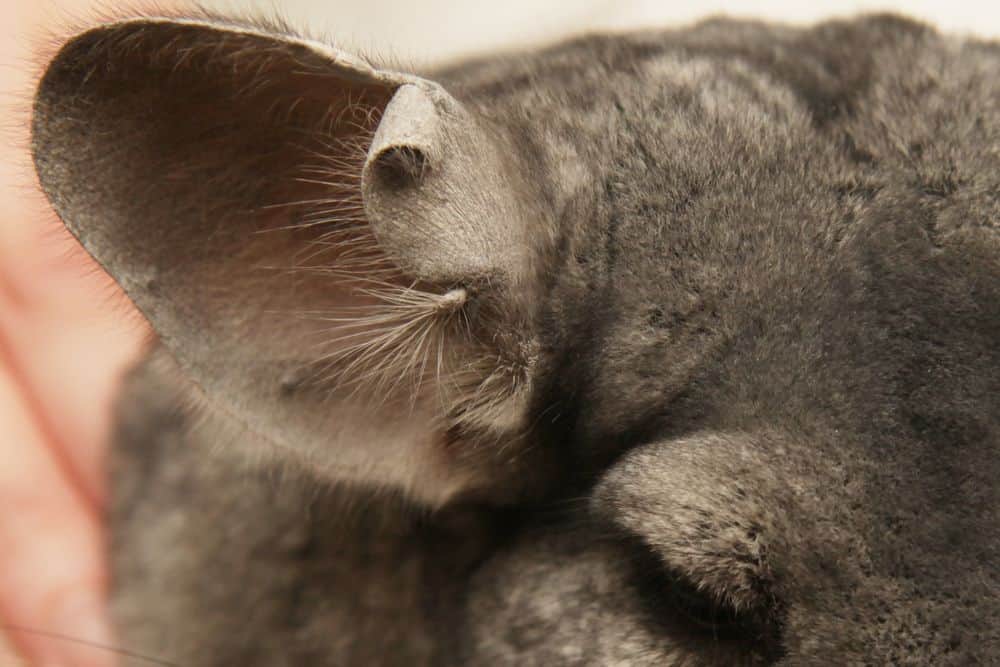
Now comes the fun part. If it is so hard to spot fleas on your chinchilla, what do you do? How are you supposed to know if your chinchilla has fleas or not?
Well, if finding the fleas themselves is not an option, you can just look for other signs of fleas on your chinchilla. This starts with searching for flea dirt. This looks like dry blood or tiny black pieces of dirt on your chinchilla’s fur.
Now, if you have a dark-haired chinchilla, this is also going to be tough to do. If your chin is dark, this is going to be one of the rare times I do recommend using a brush on your chinchilla.
Use the brush to peel back a bit of fur and take a look. You also want to brush your chinchilla and see what kind of debris and grime remains on the brush or falls to the ground.
This is probably your best bet to determine if your chinchilla has fleas. You can quickly do this while your chinchilla is out for a dust bath or even during playtime.
Whatever the case may be, just find a few minutes to look and investigate, if you suspect that your chinchilla may have fleas.
If you can’t find the time for this, perhaps try completing this task while doing a regular cage cleaning for your chinchilla.
If you can’t complete this task on your own or don’t feel comfortable, I recommend stopping by a vet and allowing them to check your chinchilla for fleas.
Observe Your Chinchilla’s Behavior
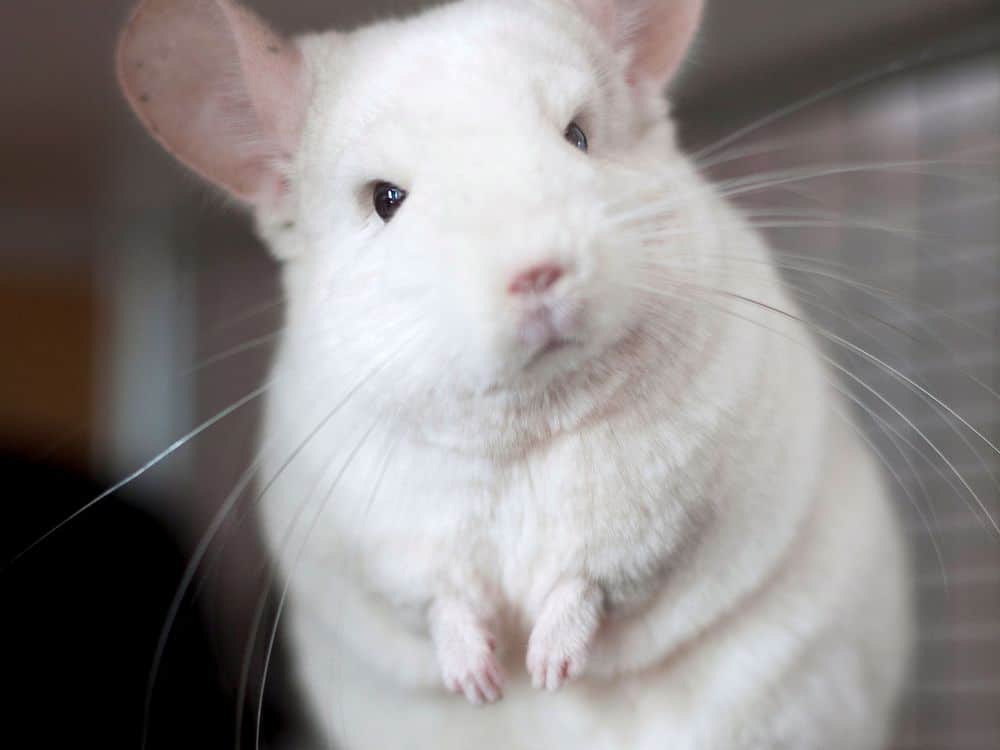
Sometimes you don’t even need to worry about find the fleas on your chinchilla with a visual inspection. Sometimes you can tell your pet has fleas simply by observing its behavior.
Is your chinchilla shaking or scratching more than usual?
Do you notice more fur slipping or even more patchy spots on your chinchilla’s fur?
Signs such as biting, scratching, or hair loss can be critical indicators that your chinchilla might have fleas.
Again, if you don’t want to complete the inspection for fleas on your own, or don’t feel comfortable, schedule an appointment with your vet and let them check for fleas.
The upside to doing this is that, aside from your vet diagnosing your chinchilla with fleas, you can just get them treated while you’re there, too.
Treating Chinchilla Fleas
Chinchillas are a little bit different when it comes to fleas. It’s so rare that chinchillas get fleas that they don’t take preventative flea medication like dogs and cats do.
And if they do get fleas, chinchillas are tiny animals, so you do need to exercise some caution.
Never give your chinchilla flea medication or attempt to use some of the other remedies on pet store shelves, like flea collars or other medications, without speaking to your vet.
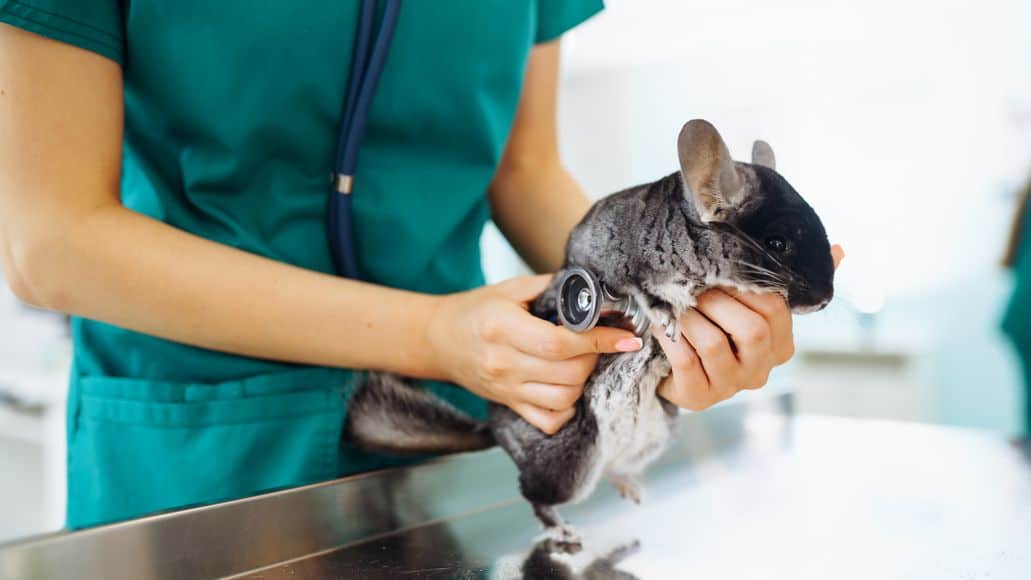
Many of these could potentially harm your chinchilla, or even kill it.
Do not use any medications to treat your chinchilla’s fleas, unless they were prescribed by a veterinarian. Ever.
If your chinchilla does not have fleas and you’re simply doing some research, or if it had them and you want to make sure it never happens again, let’s cover some preventative measures you can take.
Preventative Care
Again, although it is rare, chinchillas can get fleas. Our goal is to make it as unlikely as possible.
And there are a few things you can do to actively reduce the chances that your pet gets fleas. Honestly, these are things you really should be doing anyway.
First and foremost, clean your chinchilla cage often. Your chinchilla does pee and poop on the shavings in the cage, unless your chinchilla is potty trained to urinate in a litter box.
But even then, you still need to clean the cage.
I clean the poop and other debris out of my chinchilla’s cage daily and do a full cleaning of the cage every 3 to 5 days, depending on my schedule.
The goal is to eliminate any common breeding grounds for fleas. A cage with damp wood shavings, or even mildew, can attract the little pests.
This is even more of an issue if you have other pets in the house, like dogs or cats, that may have fleas on them. These fleas can easily find a way onto your chinchilla.
Offer Regular Dust Baths To Your Chinchilla
Offering dust baths is another huge factor toward eliminating the chances of fleas on your chinchilla. You should be giving your pet 2 to 3 of these per week.
Another big tip is to not leave the dust bath in the cage with your chinchilla.
If your chinchilla is not potty trained, there’s a chance that the dust in the dust bath house makes an inviting toilet. Then, when your pet rolls around in it come bath time, it just ends up making its fur eve dirtier, and much more inviting for those pesky fleas.
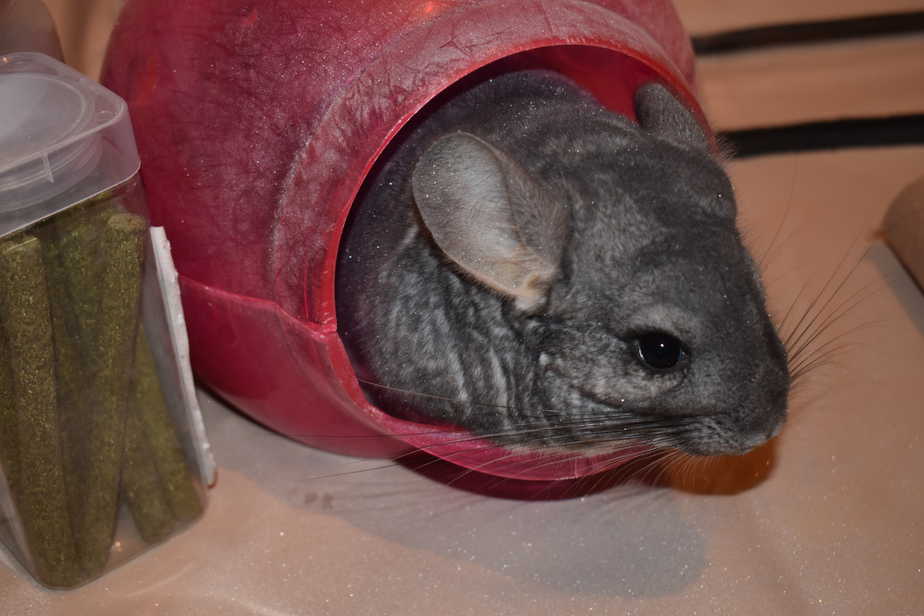
Keep A Good Environment for Your Chinchilla
Another key is keeping a good environment for your chinchilla in general. This should not only include a clean cage, but clean air and the right temperatures and humidity.
I personally run multiple de-humidifiers in the basement where my chinchilla is located. I also keep the basement as clean as possible and, as stated before, I keep the cage clean as well.
Keeping your chinchilla in ideal temperatures and keeping good air quality helps. You should also wash the water bottle and food bowl between refills, to eliminate the chances of mildew or bacteria building up.
Taking all these actions is only going to help your chinchilla avoid fleas and other pests infesting its beautiful fur.
Of course, these are things you should be doing anyway. Always be proactive with your care for your chinchilla, and the chances of getting fleas are significantly diminished.
Chinchillas Can Get Fleas: Final Thoughts
At the end of the day, your chinchilla can get fleas, but it is exceedingly rare.
If you notice any of the signs we discussed, like biting or scratching, rely on your vet to diagnose the health condition accurately. And never self-treat your chinchilla.
Outside of that, be sure to keep up with cage cleanings, water bottle and food bowl cleanings, and provide a safe environment for your chinchilla.
Chinchillas make fantastic pets and deserve the best care possible from each and every one of us. Stay on top of these tasks and hopefully, you never have to deal with fleas during your time owning a chinchilla.
Chili and I wish you the best of luck with your new chinchilla and hope you and your chinchilla never have to deal with fleas.
What’s your experience with chinchilla fleas?
Have you ever had this issue?
If so, how did you handle it and what do you recommend to the rest of us?
Be sure to share those thoughts, stories, and concerns by dropping a comment below.
As always, Chili and I appreciate you stopping by and reading today and we will see you again next time!
Leave a Reply